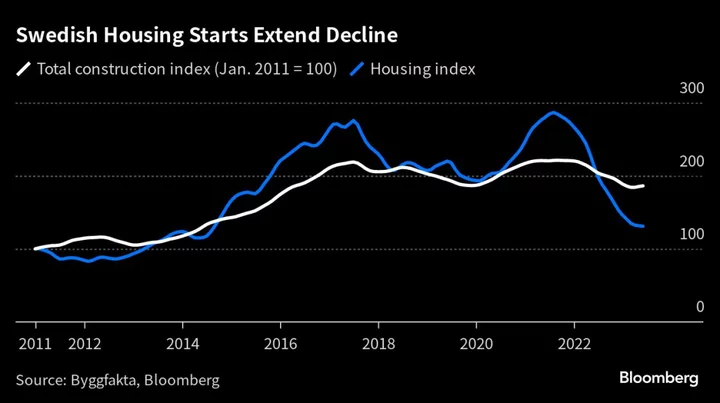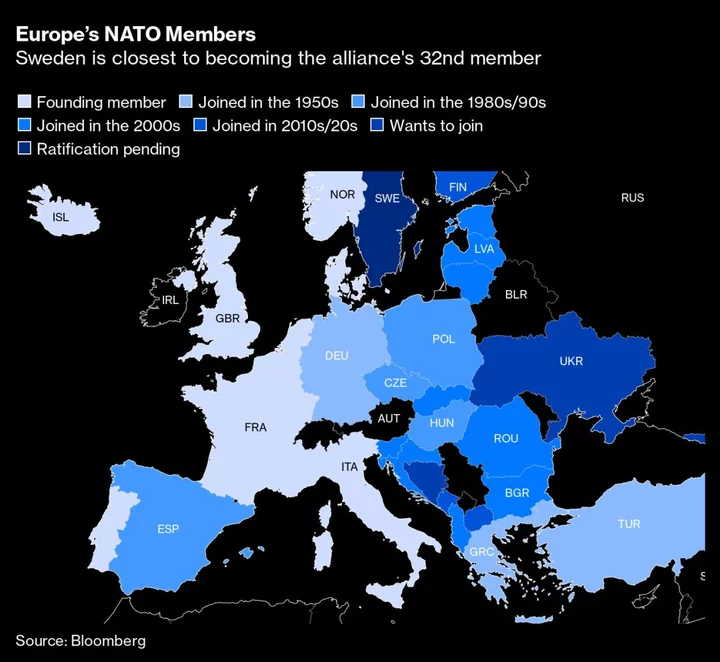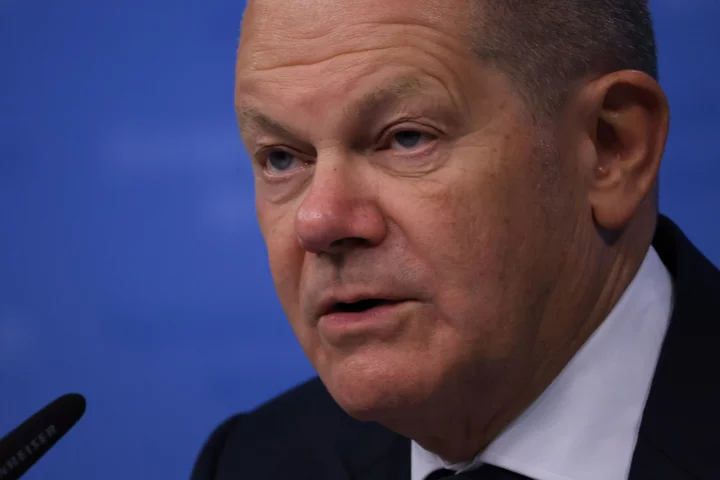An indicator of Sweden’s residential construction activity declined to the lowest level in almost nine years, contrasting with recent signs that one of the world’s worst housing slumps is letting up.
The dwelling subcomponent of the monthly Byggfakta indicator fell in June for a 22nd month in a row to the weakest point since August 2014 after a preliminary improvement in May was revised to a drop, according to a statement on Wednesday. Still, growth in other parts of the construction industry helped overall building starts rise for a second month.
The weakness in housing starts — mirrored by official data with a lag — stems from a yearlong slump in home values that began in the spring of 2022 and reduced the appetite of builders to kick off new projects. The higher cost of credit and raw materials are also weighing on the construction industry.
The indicator, which uses data on current projects to provide early evidence of activity in the sector, now signals an annual rate of “just over” 25,000 housing starts by autumn, according to Byggfakta’s head of analysis, Tor Borg.
Still, Swedish households are turning more optimistic about the housing market outlook, and home values in the largest Nordic economy have risen for most of this year. Most forecasters still expect prices to bottom out at an overall drop of about 20% from last year’s peak.
“The rising construction costs mean that the decline in square meters or the number of apartments is even greater than the indicator shows,” Borg said. “The decline appears to have started to flatten out in recent months, which is positive. But we are still facing a period when significantly fewer homes than before will be added to the housing market.”
--With assistance from Niclas Rolander.
(Updates with details from fourth paragraph.)









